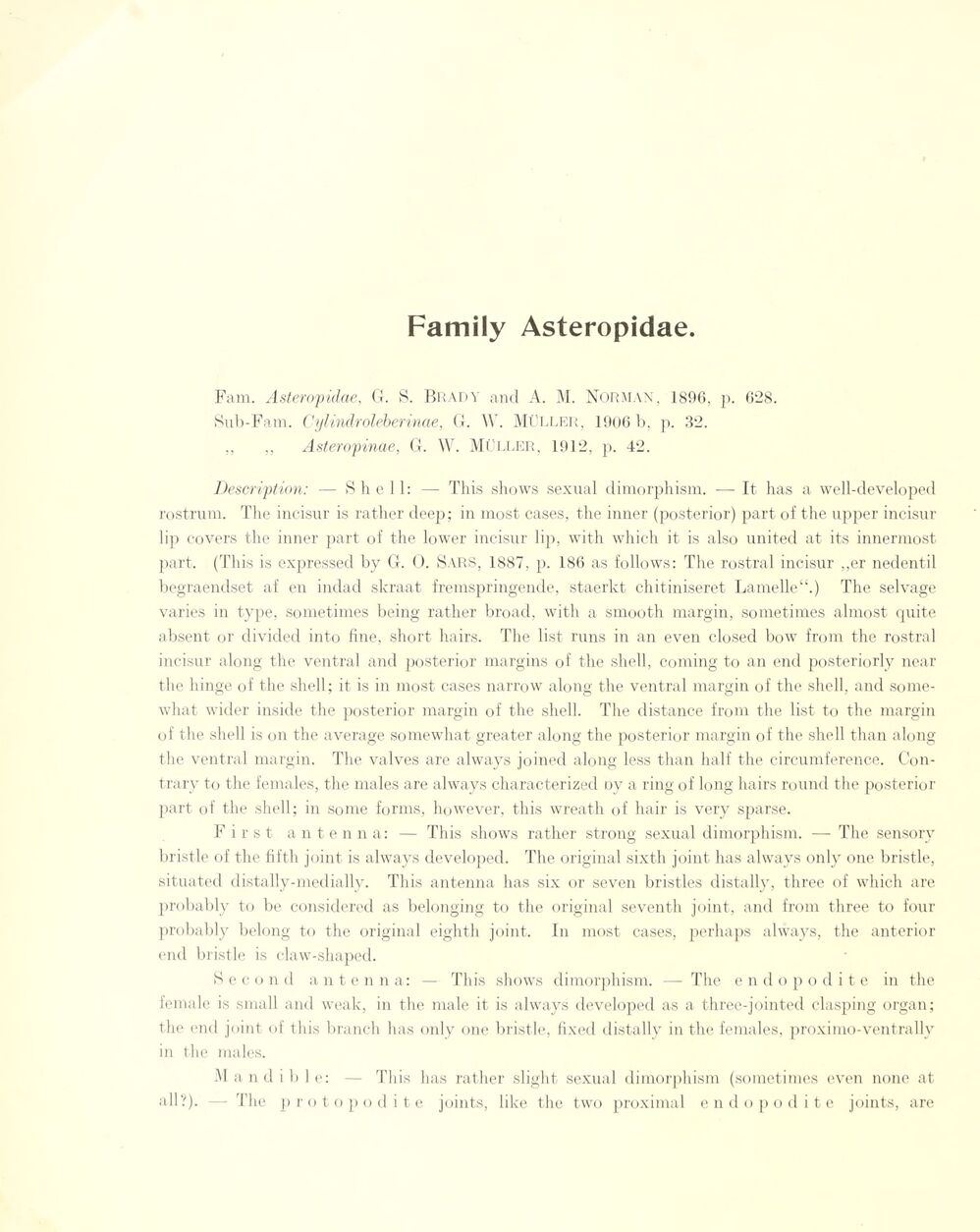
Full resolution (JPEG) - On this page / på denna sida - Sidor ...

<< prev. page << föreg. sida << >> nästa sida >> next page >>
Below is the raw OCR text
from the above scanned image.
Do you see an error? Proofread the page now!
Här nedan syns maskintolkade texten från faksimilbilden ovan.
Ser du något fel? Korrekturläs sidan nu!
This page has never been proofread. / Denna sida har aldrig korrekturlästs.
Family Asteropidae.
Fam. Asteropidae, G. S. BRADY and A. M. Norman, 1896, p. 628.
Sub-Fam. Cylindroléberinae, G. \\ . Müller, 1906 b, p. 32.
,, ,, Asteropinae, G. W. Müller, 1912, p. 42.
Description: — Shell: — This shows sexual dimorphism. •— It has a well-developed
rostrum. The incisur is rather deep; in most cases, the inner (posterior) part of the upper incisur
lip covers the inner part of the lower incisur lip, with whicli it is also united at its innermost
part. (This is expressed by G. O. Sars, 1887, p. 186 as foliows: The rostral incisur ,,er nedentil
begraendset af en indad skraat fremspringende, staerkt chitiniseret Lamelle“.) The selvage
varies in type, sometimes being rather broad, with a smooth margin, sometimes almost quite
absent or divided into fine, short hairs. The list runs in an even closed bow from the rostral
incisur along the ventral and posterior margins of the shell, Corning to an end posteriorly near
the hinge of the shell; it is in most cases narrow along the ventral margin of the shell, and
sorne-what wider inside the posterior margin of the shell. The distance from the list to the margin
of the shell is on the average somewhat greater along the posterior margin of the shell than along
the ventral margin. The valves are always joined along less than half the cireumference.
Con-trary to the females, the males are always characterized Dy a ring of long hairs round the posterior
part of the shell; in sonae forms, however, this wreath of hair is very sparse.
First antenna: — This shows rather strong sexual dimorphism. — The sensory
bristle of the fifth joint is always developed. The original sixth joint has always only one bristle,
situated distally-medially. This antenna has six or seven bristles distally, three of which are
probably to be considered as belonging to the original seventh joint, and from three to four
probably belong to the original eighth joint. In most cases, perhaps always, the anterior
end bristle is claw-shaped.
Second antenna: — This shows dimorphism. — The endopodite in the
female is small and weak, in the male it is always developed as a three-jointed clasping organ;
the end joint of this branch has only one bristle, fixed distally in the females, proximo-ventrally
in the males.
M a n d i b 1 e: — This has rather slight sexual dimorphism (sometimes even none at
all?). — The pro topo dite joints, like the two proximal endopodite joints, are
<< prev. page << föreg. sida << >> nästa sida >> next page >>